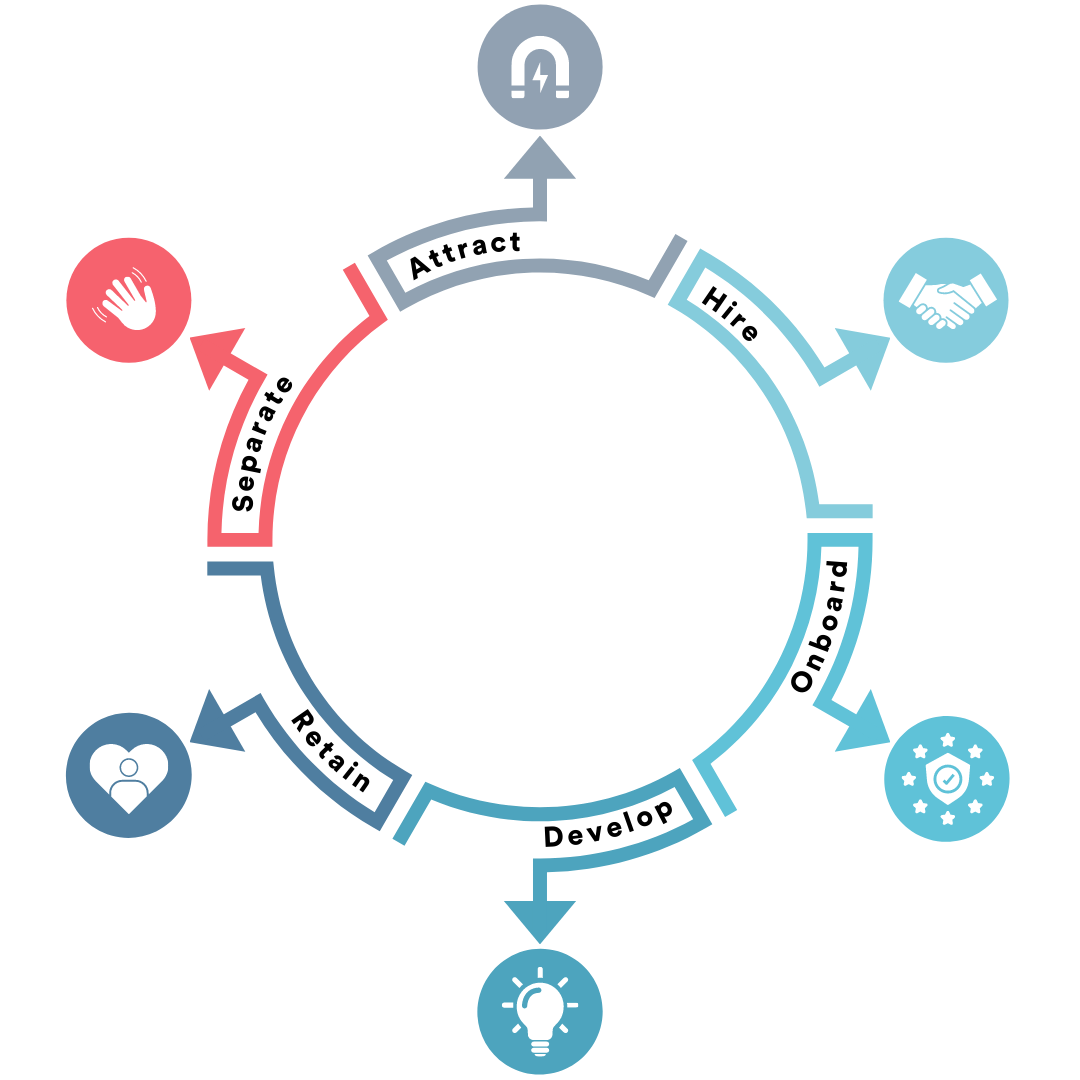Deciding how to create the best employee experience strategy has become a ubiquitous topic for enterprise C-Suites. With the world of work changing rapidly, EX is seen by many as a crucial factor in retaining and engaging existing staff while also attracting new talent in a competitive market.
Because they are one of the main conduits by which employers and employees interact, internal communications professionals and internal comms technologies are now at the heart of employee experience.
Employee experience strategy is a relatively new field though, so, what role should communicators have in the general upgrade of EX? Moreover, what practical steps can you take to drive value for the organization by creating a seamless employee experience through communication?
Why do you need an employee experience strategy?

Every interaction a worker has with their employer, from information architecture to the UX of an employee experience platform, informs how they feel about the business. Crucially – given the recent levels of voluntary turnover and the fierce competition for talent – this also contributes to how long they are likely they are to stay working there.
Multichannel communications: How to plan and execute a strategy
The business case for having better EX is simple then. If you create frictionless employee experiences then workers will be more engaged, productive, and likely to stay. A poll by McKinsey suggests that individuals who report positive EX have 16 times the level of engagement as negative individuals. They’re also eight times more likely to want to stay in a role.
If happy workers who want to stay aren’t enough, 2021 research from IDC also found that:
85% of respondents […] agree that an improved employee experience and higher employee engagement translate to a better customer experience, higher customer satisfaction, and higher revenues for their organization. In fact, 62% said that there is a defined causal relationship between EX and CX and that the impact was “large” or “significant” and measurable.
Source: Employee Experience and Customer Experience – What is the Connection?
Mapping EX along the employee lifecycle

While an effective employee experience strategy is not solely about the big moments on the employee lifecycle (recruitment, onboarding, performance review, etc.), it would be impossible to govern all of the micromoments (chance conversations or social media posts, for example) that fill the space between the larger events.
The reality is that those micromoments are individual and hard to capture without constantly performing invasive questioning or monitoring. The employee lifecycle on the other hand is a fairly universal process that can be standardized and improved upon.
That’s why one good way to design an EX strategy begins with the employee journey. By taking each of the major milestones and seeking to create better experiences at each stage, an organization can smooth the pathway.
One popular way of outlining the employee journey is via a six-stage journey map.

Six stages in the employee journey
- Attract: Find talented individuals who have the right skillset for your role, but who also want to work for an organization that adheres to your values and mission. Remember that this often takes place through personal referrals.
- Hire: Ensure the people applying for your company experience a fair hiring process, with feedback at every stage. These initial experiences with HR and hiring managers count when building new relationships.
- Onboard: The onboarding experience is incredibly important in creating trust and upskilling new starters, yet only 12% of employees strongly agree their organization does a great job of onboarding. Effective onboarding includes providing access to training materials but also looks to socialize new starters within an organization.
- Develop: Learning and development opportunities (whether that’s a program, mentoring, or other forms of advancement) are a key way to engage employees. They allow individuals to visualize their own career path, which is especially important if you hope to retain their services. Encouraging the development of new skills also adds valuable new knowledge to a business.
- Retain: Perhaps the biggest single area within the journey, staff retention comes down to many factors, including appreciation, performance management, company culture, and socialization.
- Separate: Very few people stay with one company for life now, so creating a positive leaving experience is also important. Ultimately, you want your alumni to be advocates for your organization so that they will recommend you, leave a positive Glassdoor review, and maybe even return in the future.
Multichannel communications: How to plan and execute a strategy
Using communication to create positive EX at every stage
In his book “The Employee Experience Advantage,” Jacob Morgan outlines three environments in EX delivery. These include an organization’s cultural, technological, and physical environments.

To take the example of technology, while fully functional IT experiences can enable productivity: outdated and poorly administered experiences make it harder to communicate and collaborate, increase time taken on tasks, create duplication, and create a disengaged workforce.
So, optimizing the technological environment through good equipment and systems during each stage of the employee lifecycle can create a better overall employee experience strategy. The same principle applies for the cultural and physical environments.
What makes for a positive experience? To use the technology example again, Morgan suggests three things in his “ACE technology” pillar of EX. Organizations should provide tools and experiences that are:
- A: Available to everyone
- C: Consumer grade technology
- E: Employee needs versus business requirements

All of the environments mentioned have their own success factors (cultures that value employees and spaces which offer flexibility, for example). Using these parameters, it is possible to make an EX plan that seeks to improve spaces, culture, and technology at every stage.
Here are some ways that communicators can use technology, spaces, and culture at specific EX-defining moments.
Multichannel communications: How to plan and execute a strategy
#1 Attract
Create a positive, shareable corporate culture and employees will be more likely to act as brand advocates. When they speak about your organization to friends and acquaintances it will be in a way that makes them want to work with you too, leading to a greater choice when hiring.
These personal recommendations begin any new starter’s EX on the right foot as they will be more inclined to feel positively about your company.
There are many ways to improve company culture, but one of them is to create a place fuelled by purpose. How do you reinforce your mission and values? Storytelling.
Stories are remembered up to 22 times more than facts alone and are proven to achieve higher impact, engagement, and emotional connection. Use your internal communications platform to really bring your work to life by giving everyone access to regularly updated customer stories that show how your organization helps in the real world.
Do employees visit customer sites or offices that will enable them to feed back? Could you do a ‘humans of New York’-style interview of those visiting your stores? What about the testimonials consumers leave on your external platforms?
Putting these front-and-center in your organization gives context to the work of your employees, helping them to understand the real-life impact of what they do day-to-day.
Picking the right intranet name can help to attract employees to engage in your culture. These intranet name suggestions are worth considering.
#2 Hire
One tenet of a good employee experience strategy is creating spaces that are fair, flexible, and welcoming. This is especially important when people are going through the recruitment process and you want them to feel yours is organization where they will be treated with respect.
With the world turning to hybrid and remote working, however, this shouldn’t apply only to physical spaces. Presence equity on a digital level is becoming more important and many organizations are putting in place practices to ensure that remote workers (and hires) are treated in the same way that physical workers are.
A contribution that communicators can make to this is to publicize guidelines and technical tips which help HR to create a seamless virtual hiring process. In a similar way to DE&I strategies, be transparent in your communications so that stakeholders understand that creating a cohesive work culture depends on valuing remote worker experiences too.
The information you provide might include suggestions for how recruiters and hiring managers can make remote candidates feel more at ease, but it may extend as far as helping HR to establish and publicize new guidelines for the interview process. If one candidate is able to interview physically but four others are virtual, it may be necessary to have an initial virtual stage for everyone to ensure fairness.
Publishing these practices internally or even on social media could support a stronger employee experience for those who join you.
Multichannel communications: How to plan and execute a strategy
#3 Onboard
For better or worse, every person joining an organization goes through some form of onboarding. At its worst, onboarding involves sending out a new laptop and leaving the new starter to find their feet; done properly though, pre-boarding and onboarding can be a smooth process that embeds new hires in your company culture, introduces them to teammates, and provides them with preliminary training and access to resources.
Communicators can support the upgrading of employee onboarding (and the development of an ACE technology environment) via a company intranet that offers access to learning and development programs, colleagues, and company information. Your intranet may already provide features such as blogs, contacts, forums, video, and communications that allow you to build up an area in which to welcome your beginners. And of course, no matter where your employees are, they can access the company intranet whether they’re in offices, on the road, or working remotely.
A dedicated onboarding area can benefit EX by:
- Streamlining and simplifying processes and paperwork.
- Standardizing onboarding approaches across the organization.
- Empowering new staff to self-serve rather than relying on responses from colleagues.
- Fast-tracking productivity with centralized and easy access to peers, information, and content.
- Facilitating e-learning and training.
#4 Develop
Once a new starter has settled into the rhythm of working life, offering them the time and resources to learn new things and advance is a critical part of an EX-driven culture. e-learning tools, sponsorship for event attendance, mentorships, or other development pathways are all instrumental for keeping workers engaged and happy with life in your organization.
How can comms help? Whether your organization has invested in a learning management system, creates development programs in-house, or enlists a third party for L&D, you want to get the most out of your investment. This is where your intranet software can help. A modern social intranet enables communicators to promote L&D programs internally while also improving how people can discover more about them organically.
Use a prominent homepage widget on your intranet to provide a clickable link to a dedicated content area containing an overview of your L&D programs, success stories, and step-by-step guides for enrolling or registering interest in development programs.
Alternatively, broadcast L&D reminders and updates across every channel with a multichannel intranet that includes email, intranet homepage banners, channels on digital workplace platforms (Teams, Slack, etc), digital signage, and mobile app notifications. These methods can both help to foreground development opportunities as part of your employee experience strategy.
Multichannel communications: How to plan and execute a strategy
#5 Retain
How does a company retain staff for the long term? Very carefully, to coin a phrase. There is no single factor that influences the decision to leave a job, so an employee experience strategy designed for the retention stage must take account of technology, culture, and spaces.
While there isn’t a single cause that drives employees to leave, that’s not to say some factors aren’t more important than others. The old cliché goes, “people don’t leave bad jobs, they leave bad bosses”, and there’s good evidence to show that this is true. Research conducted by the London School of Economics found that even workers with high self-evaluations were more likely to be stressed and consider leaving a role when undermined by a bad manager.
Communication can help to create a good managerial environment and lead to better EX, but evidence shows that “a stunning majority (69%) of managers said that they’re often uncomfortable communicating with employees.”
Thankfully, the profusion of internal communications tools available means that even managers who feel uncomfortable with one form can be upskilled in others more appropriate to their personality and style. Internal communicators can work with managers and senior leaders to provide training on the channels that are most relevant, from writing emails to face-to-face tips. For those managers who are less able to voice praise when it’s due, rewards systems and point giving can be a very public but comfortable way for them to celebrate and retain good staff.
#6 Separate
All good (and not so good) things come to end. Even when an employee is parting with an employer, it’s important to create a good EX moment so that they go on to be brand advocates and existing staff understand that their own concerns will be taken seriously.
Some organizations make the mistake of not listening to or acting on the feedback of exiting employees, yet the opportunity to gather honest feedback can be critical. Although the process is managed by HR and relevant departmental managers, communicators could have a role too.
Study the opinions gathered during exit interviews and then use them to create pulse surveys that ask employees how they’re feeling. If certain points of tension are mentioned time and again then seeking to gauge general opinion can show that the company is not ignoring a big issue. The general cultural impact of people knowing that their exit interviews form a part of the company’s commitment to improvement could help everyone to see greater value in their opinions.



